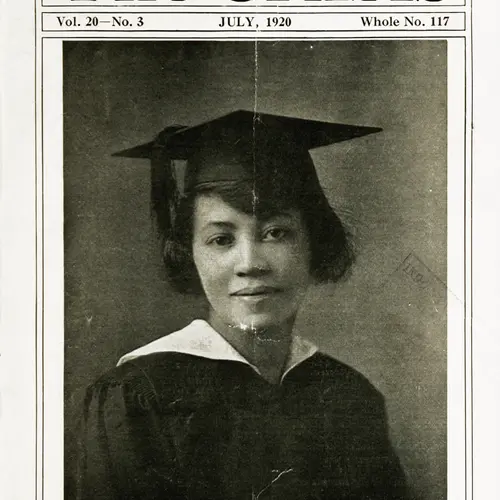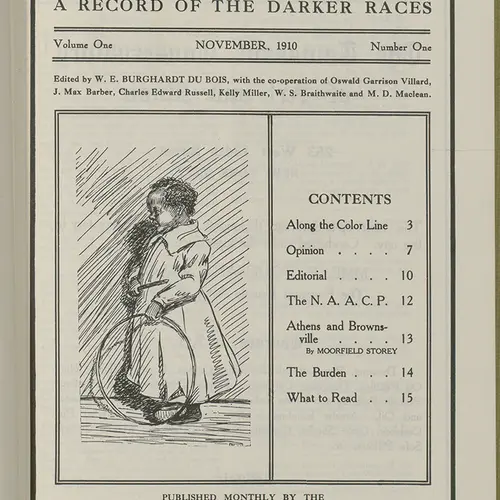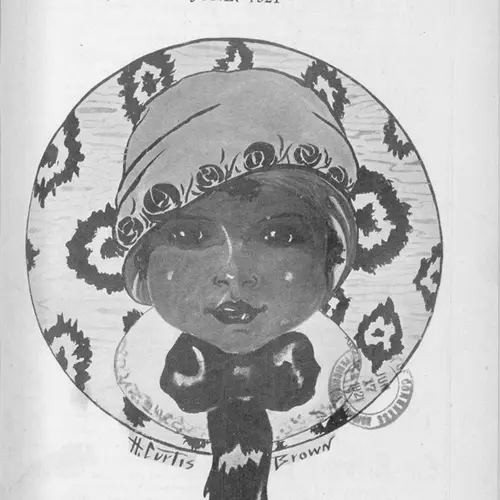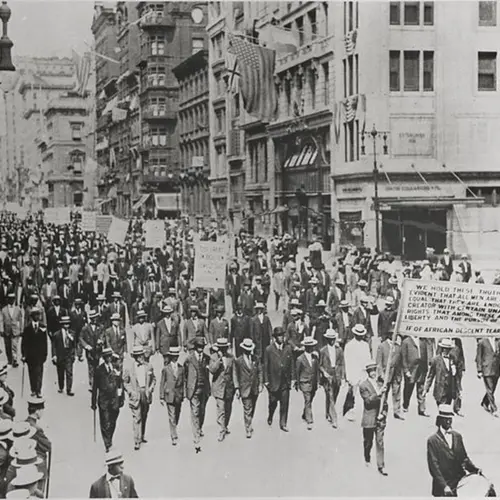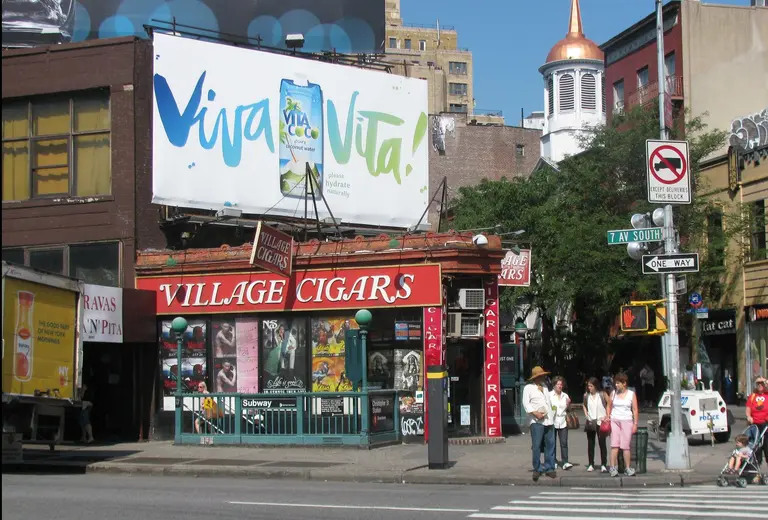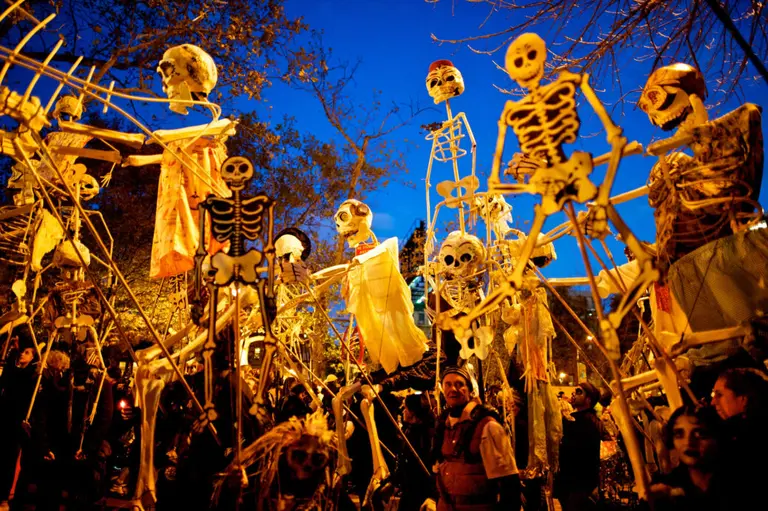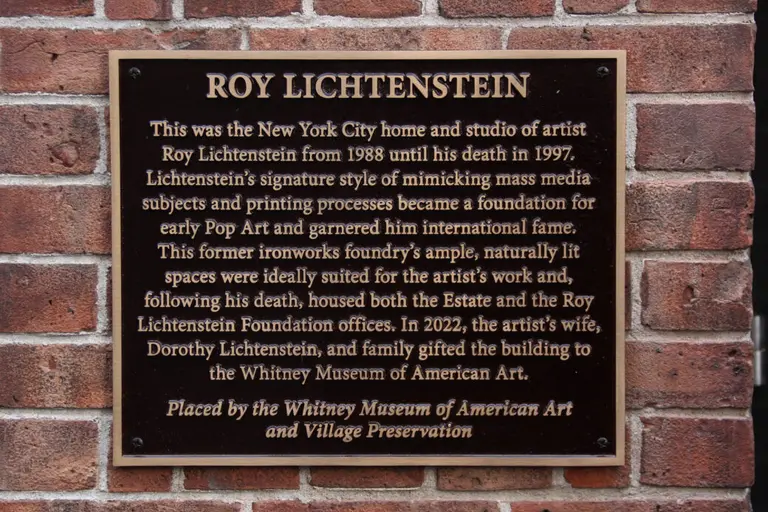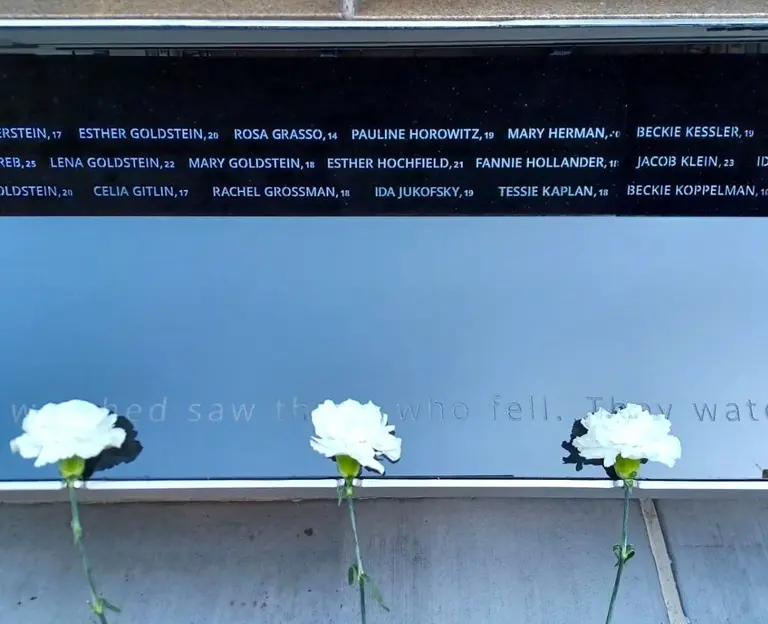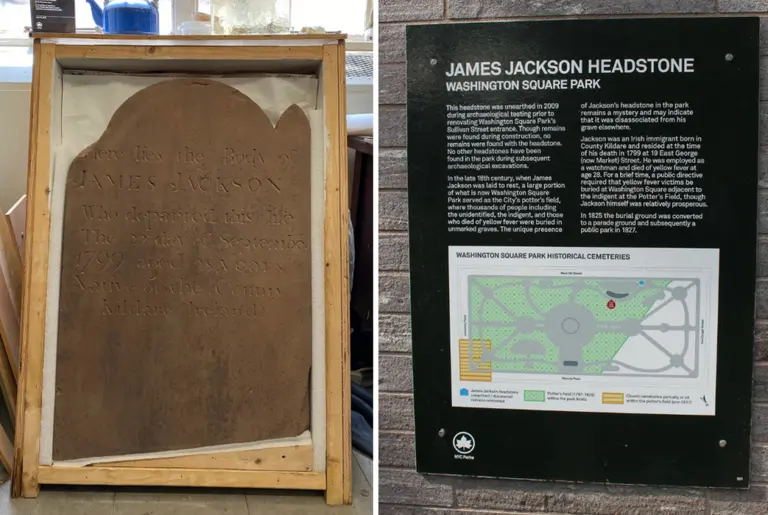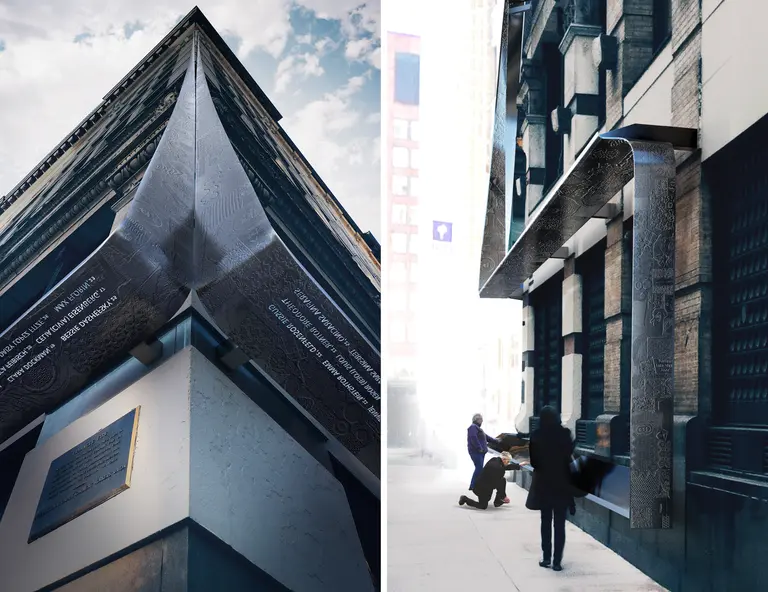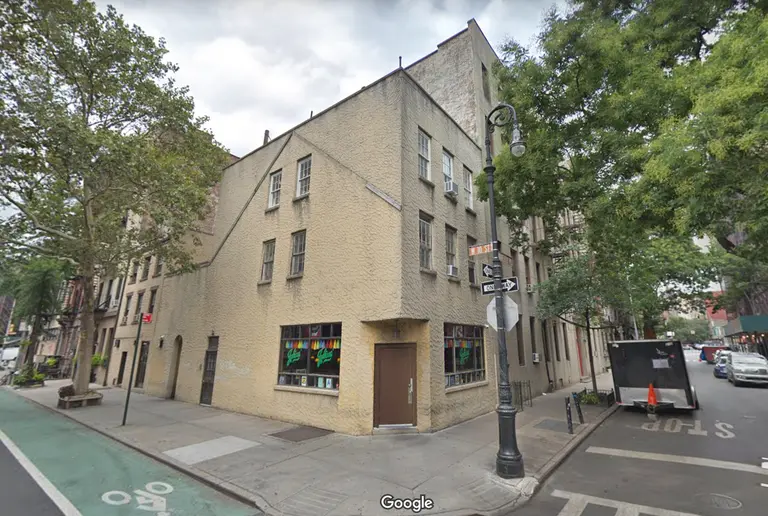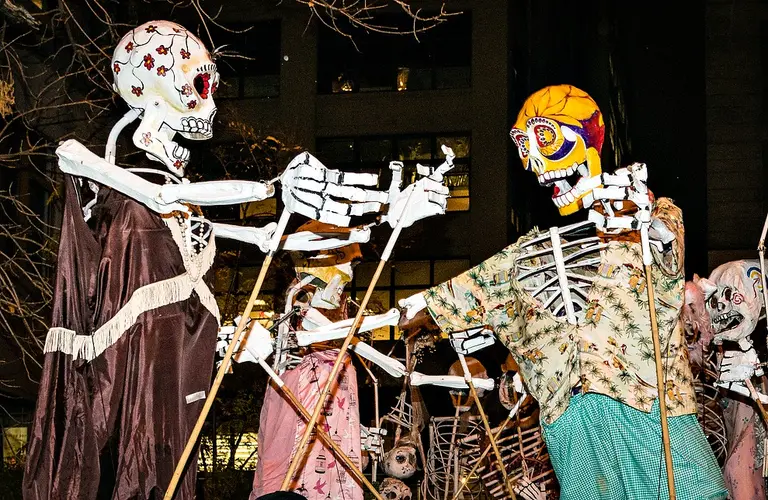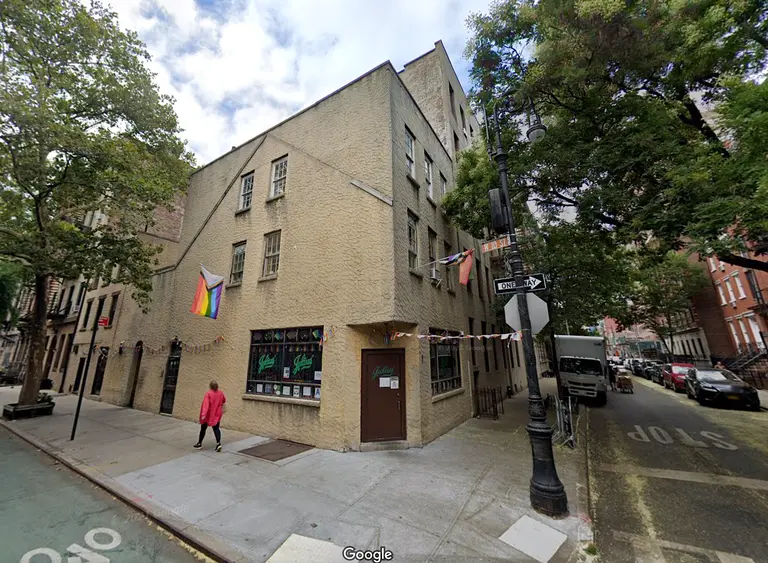Civil Rights, the NAACP, and W.E.B. DuBois: The African American history tied to 70 Fifth Avenue
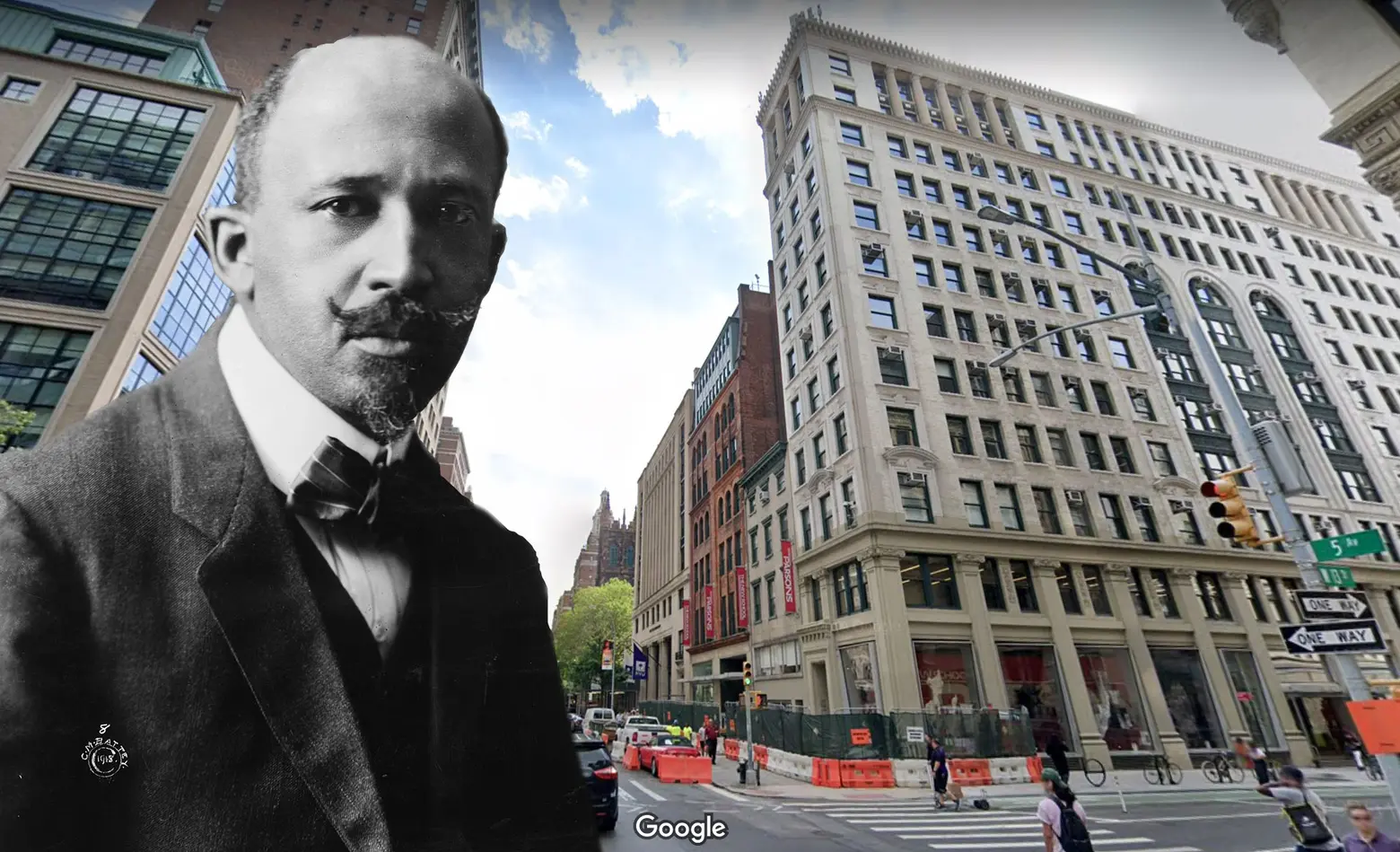
Street View of 70 Fifth Avenue, Map data © 2020 Google; Photo of W.E.B. DuBois in 1918 from Library of Congress, via Wikimedia Commons
When we think of great African American historic sites in New York, we typically think of Harlem’s Apollo Theater, Lower Manhattan’s African Burial Ground, or Brooklyn’s Weeksville Houses. But one building that should perhaps join the list is 70 Fifth Avenue in Greenwich Village, which housed the headquarters of the NAACP, the nation’s oldest and largest civil rights organization; The Crisis, the first magazine published for an African American audience; and the first magazine dedicated to African American children, meant to combat the commonplace demeaning stereotypes of the time, headed by none other than civil rights icon W.E.B. DuBois.
70 Fifth Avenue, located at the southwest corner of 13th Street, was built in 1912. Shortly after it opened, the National Association for the Advancement of Colored People (NAACP), founded in 1909, moved its headquarters here and remained well into the 1920s. This was a time of extraordinary growth, accomplishment, and challenges for the nation’s oldest and largest civil rights organization. It was focused on the epidemic of lynchings of African-Americans and race-based violence taking place at the time, discrimination in voting, housing, and employment, and the proliferation of demeaning, derogatory, and dehumanizing representations of African Americans in media such as The Birth of A Nation.
At the same time, their tenancy here coincided with and reflected a flowering of black culture thanks to the Harlem Renaissance, growing African American aspirations for greater freedom and opportunity (emanating in part from participation in World War I and the principles of democracy and self-determination which were the premise for the United States’ joining the conflict), and the Great Migration, which began at this time and saw more African Americans living in the North, Midwest, and West.
During the NAACP’s time at 70 Fifth Avenue, the status of civil rights for African Americans was arguably deteriorating in many ways. States were introducing legislation to ban interracial marriages and formalize barriers to voting and access to housing. In his first year in office (1913), President Woodrow Wilson introduced segregation into federal government agencies, establishing separate workplaces, bathrooms, and lunchrooms for blacks and whites.
Among the NAACP’s first campaigns while at 70 Fifth Avenue was to challenge the newly-instituted segregation within the federal government with a highly-publicized “Open Letter to President Wilson.” At this time, the NAACP also succeeded in securing the repeal of an American Bar Association resolution barring the admission of black lawyers, as well as in the opening of the women’s suffrage parade in Washington D.C. to black marchers.
In 1915, their second year in the Village, the NAACP launched its campaign against D. W. Griffith’s film The Birth of A Nation, arguing that it distorted history and slandered the entire black race. The wildly successful film was credited with the rebirth of the Ku Klux Klan and an increase in violence against African Americans; its prominence was raised by being shown at the White House by President Woodrow Wilson, the first such showing ever in the presidential residence.
That same year, the NAACP participated for the first time in litigation to advance its agenda – the beginning of a long and storied history of the NAACP changing the national landscape through the courts, which of course included the landmark Brown vs. Board of Education Supreme Court decision (1954), ending legal segregation and the doctrine of “separate but equal” in this country. The NAACPs’ founding President (1909-1929) Moorefield Storey successfully argued the case of Guinn vs. U.S. before the Supreme Court, striking down a “grandfather clause” in the Oklahoma Constitution which effectively barred most black men from voting by limiting the franchise to literate men or those whose ancestors were eligible to vote before January 1, 1866.
In 1916, the NAACP responded to the mutilation, burning, and lynching of an illiterate 17-year-old black farmhand in Waco, Texas accused of raping and murdering a white woman. Labeled “The Waco Horror” by the NAACP, the organization sent an investigator to Texas whose report, including pictures of the horrifying act, was published in their newspaper and distributed not only to the magazine’s 42,000 subscribers, but 700 white newspapers, members of congress, and affluent New Yorkers in an effort to gain support for their newly established anti-lynching fund. The NAACP’s anti-lynching organizing brought national attention to the oft-overlooked crime and mobilized political and business leaders in both the north and south to speak out against this de facto state-sanctioned domestic terrorism.
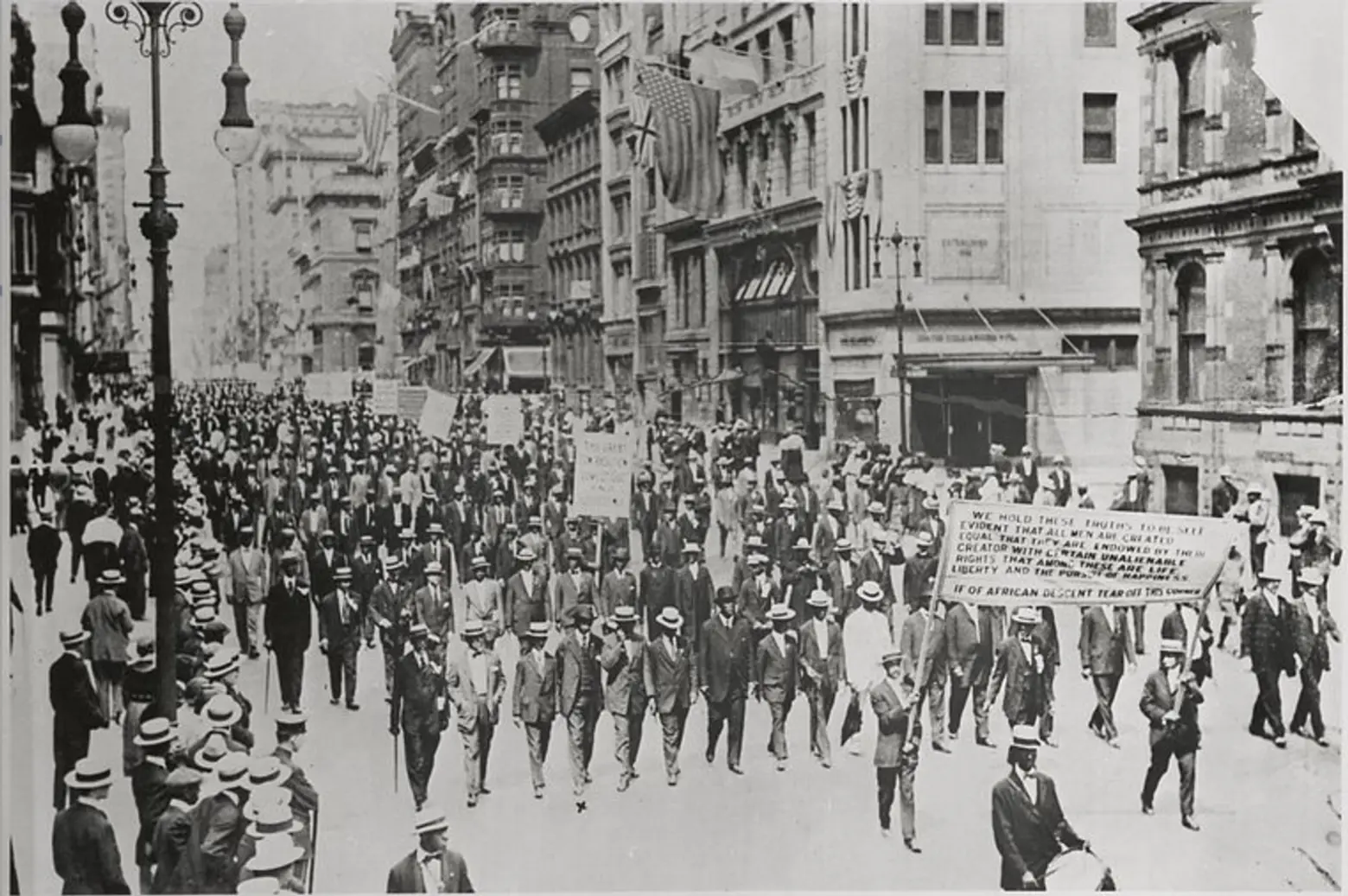
Photo of the 1917 Silent March, from NYPL via Wikimedia Commons
In 1917, following the brutal East St. Louis race riots in which between 40 and 250 African Americans were killed, thousands were made homeless from the burning of their homes, and thousands eventually left the city, the NAACP organized a silent protest down Fifth Avenue of nearly 10,000 African American men, women, and children. They marched to only the sound of muffled drums, carrying signs with messages such as “Thou Shalt Not Kill,” “Make America safe for democracy” and “We march because we want our children to live in a better land.” This was the first protest of its kind in New York City, and only the second instance of African Americans publicly demonstrating for civil rights (the NAACP’s protests against Birth of A Nation and the Silent March, organized from their headquarters at 70 Fifth Avenue, were arguably the first large public demonstrations for African American civil rights in the country).
That same year, the NAACP succeeded in urging the Supreme Court to rule that ordinances restricting where African Americans could live, as had been passed in an increasing number of localities including Baltimore and Louisville, were unconstitutional violations of the 14th Amendment. They also won the battle to allow African Americans as commissioned officers in World War I, with 600 achieving that rank.
In 1918, the NAACP secured passage of an amendment to the New York State Civil rights law protecting African Americans, their first such statewide success which they used as a model for progress in other states in subsequent years. After bitter resistance, the NAACP also finally secured from President Woodrow Wilson a public pronouncement against lynching, which he had previously refused to do. That same year, an anti-lynching bill was introduced in the House based on a bill drafted by NAACP co-founder Albert E. Pillsbury. The bill called for the prosecution of lynchers in federal court and made state officials who failed to protect lynching victims or prosecute lynchers punishable by up to five years in prison and a $5,000 fine. It also allowed the victim’s heirs to recover up to $10,000 from the county where the crime occurred.
In 1919, the NAACP released its landmark report “Thirty Years of Lynching in the United States, 1889-1918,” in which it listed the names of every African American, by state, whom they could document had been lynched. This continued to bring unprecedented attention to this longstanding and uncontrolled epidemic of violence in America. In the aftermath of the end of the First World War and the subsequent unrest and intolerance which gripped the nation, 26 race riots erupted across the country during that “Red Summer,” and a record number of lynchings took place. Membership in the NAACP grew to about 90,000.
Multiple accounts also say that the NAACP began flying its iconic flag printed with “A Man Was Lynched Yesterday” in simple white sans-serif letters against a plain black background from its headquarters in 1920, and continued to do so until 1938 when they were forced to remove it or face eviction. While the sole photographic record of this appears to be an image from 1936 when the flag flew from their next location just up Fifth Avenue at No. 69 (demolished), if this frequently-cited date is correct, then this powerful campaign began at 70 Fifth Avenue.
In 1922, the anti-lynching legislation was finally approved by the House by a vote of 230 to 119, after a vigorous campaign by the NAACP which included newspaper ads across the country entitled “The Shame of America.” While the bill died in the Senate after a filibuster by Southern Democrats, congressmen in New Jersey, Delaware, Michigan, and Wisconsin who voted against the measure were defeated in the election of 1922 after their stance was made an issue in their campaigns.
In 1923, the NAACP had another successful case before the U.S. Supreme Court when they appealed the convictions of 12 African American men sentenced to death and 67 to long prison terms by an all-white jury. Those sentences had resulted from bloody riots in Arkansas in 1919 precipitated by a white mob attacking a mass meeting of black farmers trying to organize a union, in which as many as 200 blacks and 20 whites were killed. In Moore v. Dempsey, those convictions were overturned, ruling that the defendants’ mob-dominated trials were a violation of the due process guaranteed by the Fourteenth Amendment.
The landmark decision reversed the court’s previous ruling in the 1915 case of Leo Frank, a Jewish man convicted of murdering Mary Phagan, a 13-year-old employee of the Atlanta pencil factory that he managed, on specious evidence in what was widely seen as a case motivated by anti-Semitism. Later, Frank’s death sentence was commuted by Georgia’s governor, which led a mob to storm the prison and lynch Frank. As a result of the Moore ruling, Frank’s lawyer Louis Marshall joined the NAACP’s legal committee.
That same year, the NAACP began what would be a successful legal challenge (handed down by the Supreme Court in 1927) against southern state’s “white primary” laws, which precluded black candidates from running in Democratic primaries, which were tantamount to the general election in those states.
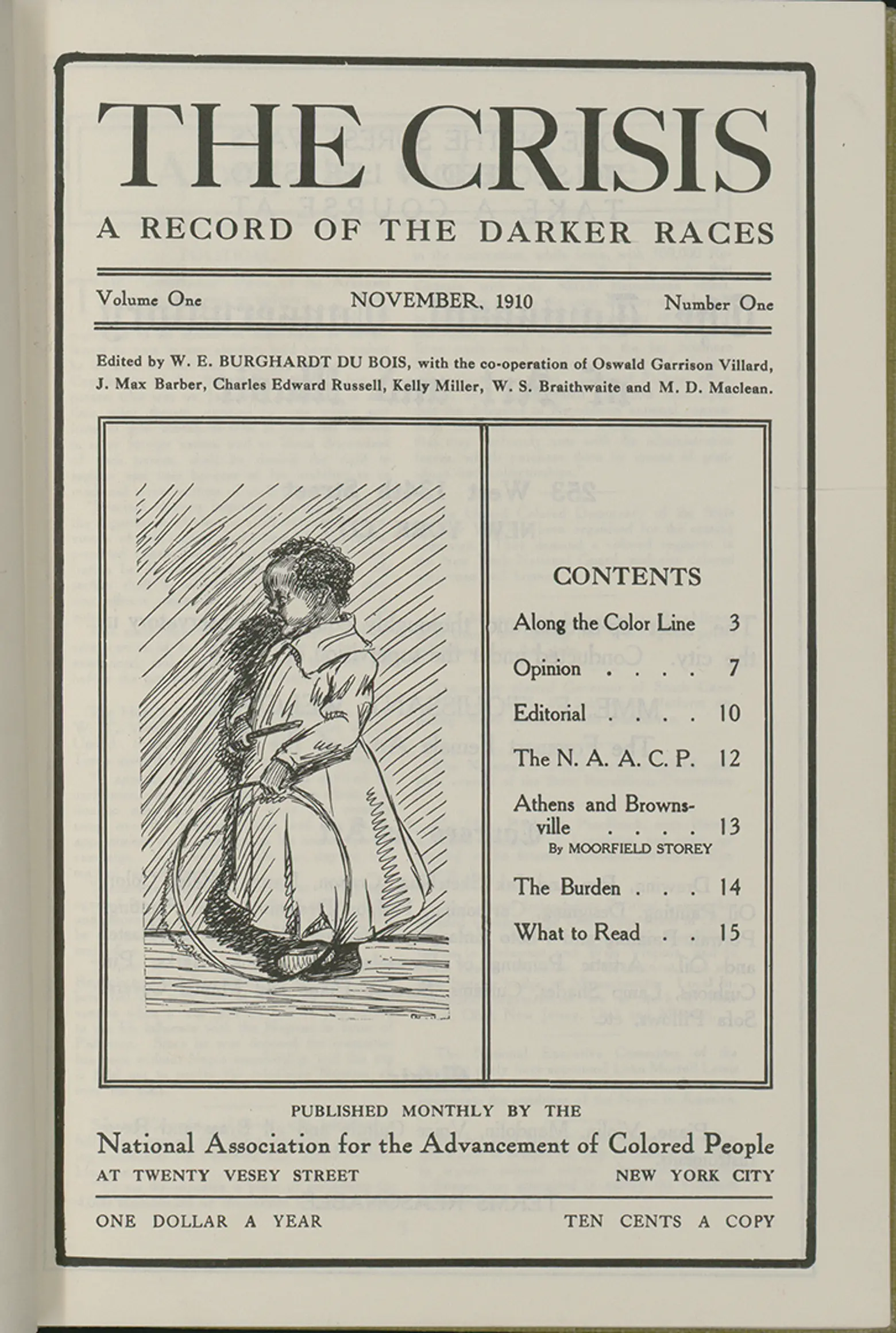 Cover of The Crisis’ first issue, via Wikimedia Commons
Cover of The Crisis’ first issue, via Wikimedia Commons
Also located at 70 Fifth Avenue during this time was The Crisis, the very first magazine dedicated to African Americans, which is still published today. Called “the most widely read and influential periodical about race and social justice in U.S. history,” The Crisis was founded by W.E.B. DuBois as the house magazine of the NAACP. The periodical called unprecedented attention to the lives and plight of African Americans, providing a forum for DuBois’ uncompromising philosophy of racial equality. Particularly during its years at 70 Fifth Avenue (1914-1923), The Crisis was an incomparable showcase for black writers and artists, containing the first publication of the writings of Langston Hughes, as well as works by Zora Neale Hurtson, Countee Cullen, Alice Dunbar-Nelson, Arthur Schomberg, and Jean Toomer. From an initial circulation of 1,000 in its first year of publication, the magazine’s circulation peaked while at 70 Fifth Avenue in 1919 at over 100,000, making it more popular than established journals like The New Republic and The Nation, while also growing from 20 to nearly 70 pages. According to DuBois, its mission was to pursue “the world-old dream of human brotherhood.”
The Crisis included both hard-hitting reporting about injustices faced by African Americans and DuBois’ pointed commentary – about lynching, Jim Crow, and the failures of political leadership to address these issues, as well as exposing readers to relevant international issues, such as the non-violent passive resistance efforts for Indian independence being led by Mahatma Gandhi in 1922.
But starting in 1918, while published out of 70 Fifth Avenue, The Crisis also came to include a rich and influential array of literature and art. That was largely reflective of the influence of Jessie Redmon Fauset, an African-American editor, poet, essayist, novelist, and educator dubbed by Langston Hughes “the midwife of the Harlem Renaissance,” who began contributing to the magazine in 1912 and served as its literary editor from 1918 to 1926. Both she and DuBois also introduced photography, painting, and drawing into the magazine as a means of communicating its message and giving a forum for expression to African Americans.
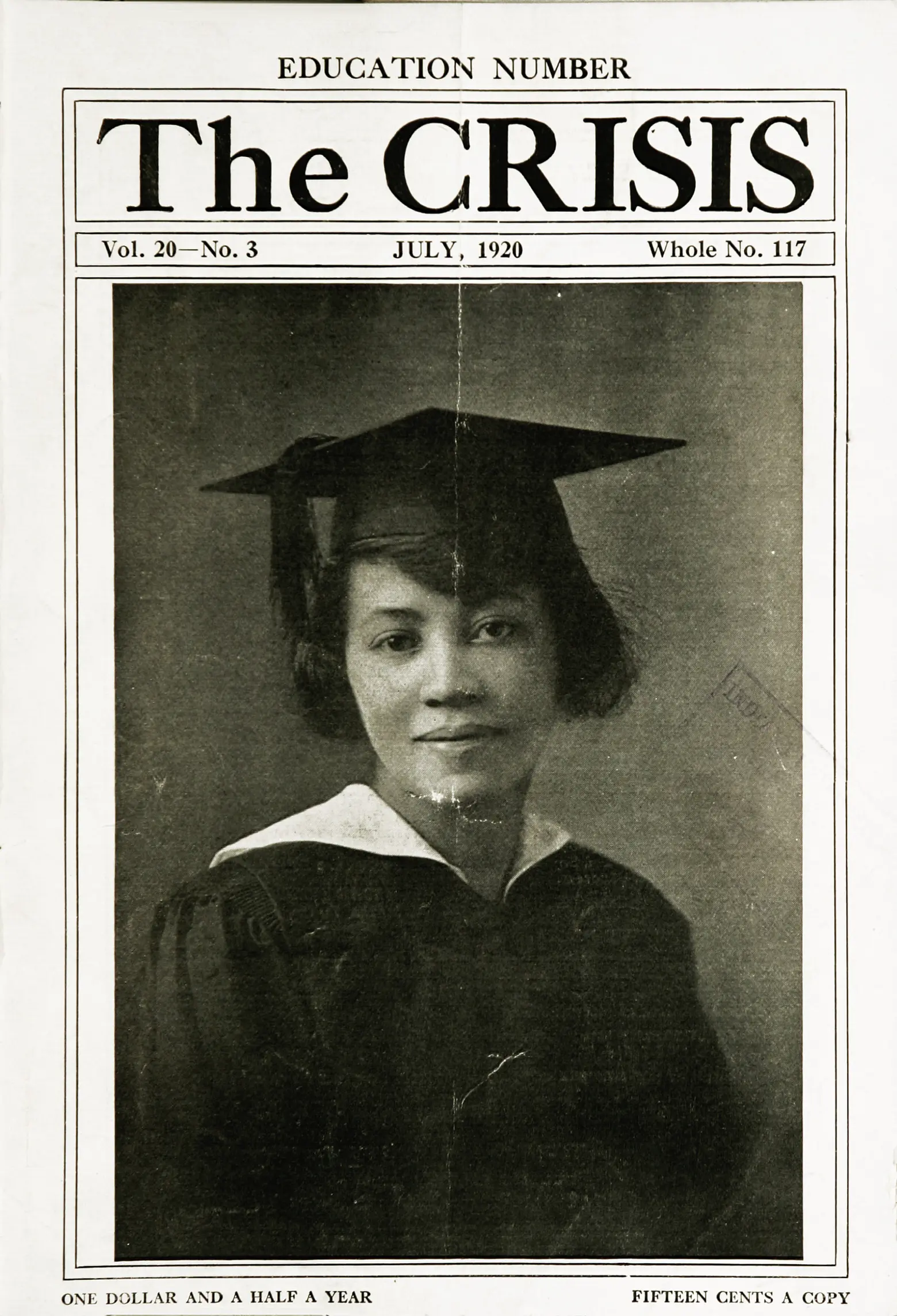 The cover of the July 1920 education issue, via Wikimedia Commons
The cover of the July 1920 education issue, via Wikimedia Commons
In addition to civil rights and the arts and literature, The Crisis had a special emphasis upon education, promoting the rise of African-American colleges and African American studies (DuBois himself would teach the very first course in African American history just feet from here at The New School in 1948). DuBois reported heavily upon both the successes and challenges of Black colleges and universities and dedicated two issues of the magazine each year specifically to the topics of education and youth respectively.
DuBois and The Crisis also had a notable commitment to gender equality. Aside from the significant role given to Fauset, the magazine showcased the works of many female writers and artists. And DuBois made that support explicit in his political writings as well; in 1911, he wrote that “Every argument for Negro suffrage is an argument for women’s suffrage; every argument for women’s suffrage is an argument for Negro suffrage; both are great moments in democracy. There should be on the part of Negroes absolutely no hesitation whenever and wherever responsible human beings are without voice in their government. The man of Negro blood who hesitates to do them justice is false to his race, his ideals and his country.”
Also located at 70 Fifth Avenue at this time was DuBois and Dill Publishing, a short-lived but highly impactful publishing house created W.E.B. DuBois and his business partner Augustus Granville Dill. It was created and located for its entire existence at 70 Fifth Avenue/2 East 13th Street. The enterprise furthered DuBois’ mission of inspiring African Americans with stories of their peers and predecessors, as well as guiding them to a better future. These highly personal projects built upon the work he was already doing through the NAACP and especially The Crisis.
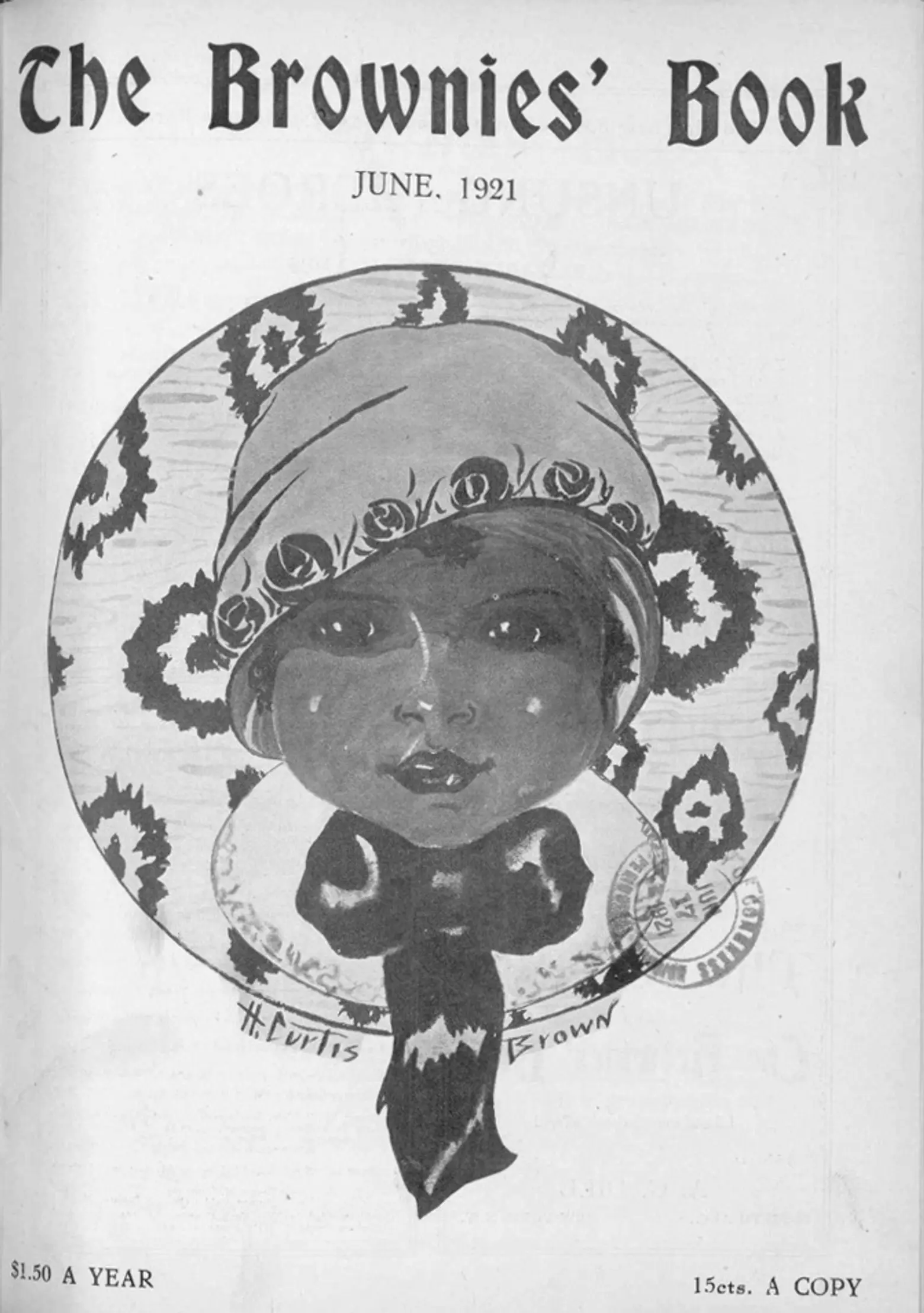 June 1921 cover of The Brownies Book, via Wikimedia Commons
June 1921 cover of The Brownies Book, via Wikimedia Commons
Dubois and Dill produced The Brownies’ Book magazine with Jessie Redmon Fauset as literary and managing editor. Growing out of the youth and education issues of The Crisis, it was the first magazine ever made for African American youth, featuring photographs, art, and literature. Its message was consistently to do well in school, take pride in one’s appearance, and learn about one’s heritage, often citing African folk tales and drawing on other aspects of traditional African culture. One of the goals was to dispel the “grotesque stereotypes” of the “Dark Continent,” a disparaging term used for Africa and its people. African American children were frequently exposed to such portrayals along with the white children who were the implied audience in contemporary children’s literary works.
In the October 1919 issue of The Crisis in which DuBois first announced that publication of The Brownies’ Book would begin in January of the following year, he also laid out its agenda:
- To make colored children realize that being “colored” is a normal, beautiful thing.
- To make them familiar with the history and achievements of the Negro race.
- To make them know that other colored children have grown into beautiful, useful and famous persons.
- To teach them a delicate code of honor and action in their relations with white children.
- To turn their little hurts and resentments into emulation, ambition and love of their homes and companions.
- To point out the best amusements and joys and worth-while things of life.
- To inspire them to prepare for definite occupations and duties with a broad spirit of sacrifice.
Like The Crisis, The Brownies’ Book had covers showcasing the work of prominent black artists. While utilizing games and music to engage its young audience, the magazine also included literature, poetry, information on current events, and biographies of successful African Americans, including Sojourner Truth, Phillis Wheatley (a slave seized from Africa at age seven, who in the 18th century became the first African American woman to publish a book of poetry), and popular Vaudeville entertainer Bert Williams.
The first issue featured a photo of African American children marching in protest of lynchings and racist violence in the Silent March of 1917. Notable authors published in The Brownies’ Book included Langston Hughes, Nella Larsen, Winifred Davidson, Effie Lee Newsome, and Georgia Douglas Johnson. The magazine published Hughes’ high school graduation picture along with those of other high school graduates and was the first publication to print Hughes’ poetry.
There was little advertising; the modest amount included was often for literature geared towards black children which typically could not be found in bookstores. Because of this, the magazine was almost entirely dependent upon subscriptions to maintain it. In spite of Fauset, DuBois, and Dill’s best efforts, it never gained enough subscriptions to become financially self-sufficient and ceased publication in December of 1921.
DuBois and Dill Publishing’s other celebrated product was Elizabeth Ross Haynes’ Unsung Heroes (1921), a book about “the lives of 17 men and women of the Negro race told in a way to inspire the children of our time.” The 17 biographies chosen by Haynes, herself a pioneering African American activist and social worker, included those who were almost entirely unknown in the early 1920s, and those who had not been given their historic due. These included Frederick Douglass, Harriet Tubman, Sojourner Truth, Paul Lawrence Dunbar, Alexandre Dumas, Crispus Attucks, Benjamin Banneker, Booker T. Washington, Toussaint L’Ouverture, and Phillis Wheatley.
By the mid-1920s, DuBois and Dill Publishing House ceased operations, and the NAACP and The Crisis moved to new quarters just up the block at 69 Fifth Avenue (northeast corner of 14th Street) where they remained for decades (the building was demolished in the 1950s).
By no coincidence, mere feet away from 70 Fifth Avenue was the headquarters of the very first national LGBT rights organization in the country, the National Gay Task Force, located at 80 Fifth Avenue in the 1970s and 80s, while the headquarters of the New York Women’s Suffrage League, the leader in the fight for women’s right to vote in New York, was located just around the corner in the late 19th and early 20th centuries. Many of the 19th and 20th century’s greatest publishing houses and printers, writers and artists, and other social justice movements could be found in these blocks just below Union Square. Village Preservation is seeking landmark designation for this area to preserve that special history.
RELATED:
- 100 years ago today, the NAACP held its Silent Protest Parade down Fifth Avenue
- 14 historic sites of the abolitionist movement in Greenwich Village
- How New Yorker Howard Bennet fought to make Martin Luther King Jr.’s birthday a national holiday
+++
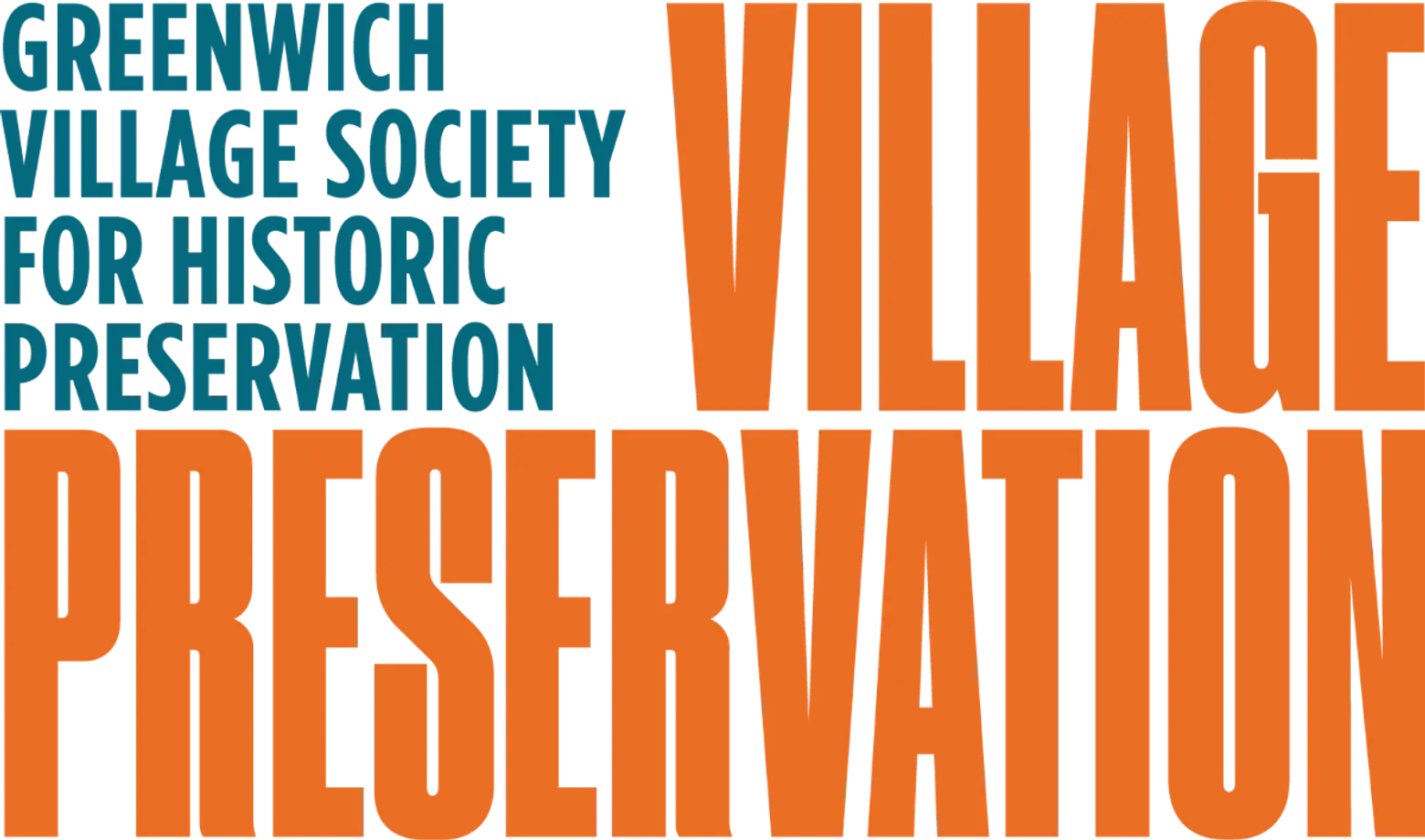
This post comes from Village Preservation. Since 1980, Village Preservation has been the community’s leading advocate for preserving the cultural and architectural heritage of Greenwich Village, the East Village, and Noho, working to prevent inappropriate development, expand landmark protection, and create programming for adults and children that promotes these neighborhoods’ unique historic features. Read more history pieces on their blog Off the Grid
